“I think photographs should be provocative and not tell you what you already know. It takes no great powers or magic to reproduce somebody’s face in a photograph. The magic is in seeing people in new ways.”
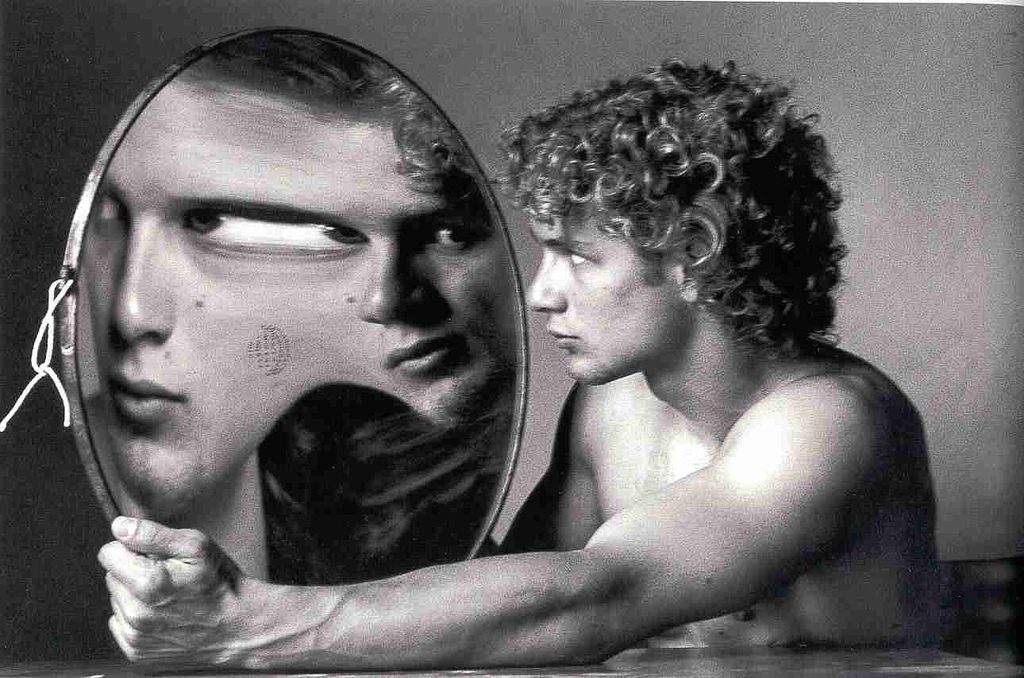
Duane Michals is considered to be one of the great photographic innovators of the last century and is well known for his work with series, multiple exposures, and text. I have decided to consider him as an artist reference because I am thinking of taking inspiration from his methods of presenting images in series combined with handwritten notes to add a new layer of meaning to the images.
On this website it explains that he “was a pioneer in the 1960s when he broke away from established traditions of documentary and fine art photography”. Rather than following the recognised methods of presenting images by focusing on them individually he created sequences of multiple images to convey visual stories using a cinema frame-by-frame format. He also incorporated text into his work with handwritten messages and poems on the paper’s surface. He said that rather than serving an explanatory function the written text adds another dimension to the images. These messages are often poetic, tragic or humorous and he has said “My pictures are more about question, not about answers.” He has also said that William Blake, Lewis Carroll, and René Magritte are influences on his work which would suggest a more surreal approach to his art.
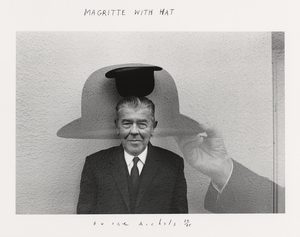
His staged photography, often includes elements of other genres, including film, theatre, and literature. He utilises cinematic language but his images also contain blurred figures which implies movement in each frame. Unlike film his images are open to individual interpretation and don’t have an overarching story-line. Initially critics were confused by his work because they reject the notion of the “decisive movement” and the popular glorification of single images. Nowadays his work is praised for this because he is considered an expressionist constructing images of the mind and exploring unseeable themes. His work is often of a personal nature, and Michals relies on his own history as subject material. They are also fantasies with a sense of absurd humour. Michals has said, “No one can reproduce my handwriting, but someone else can always make a new print” which shows his deliberate attempt to create one-off pieces which restricts the value of reproductions. This makes each piece unique, and increases the rarity of the work.
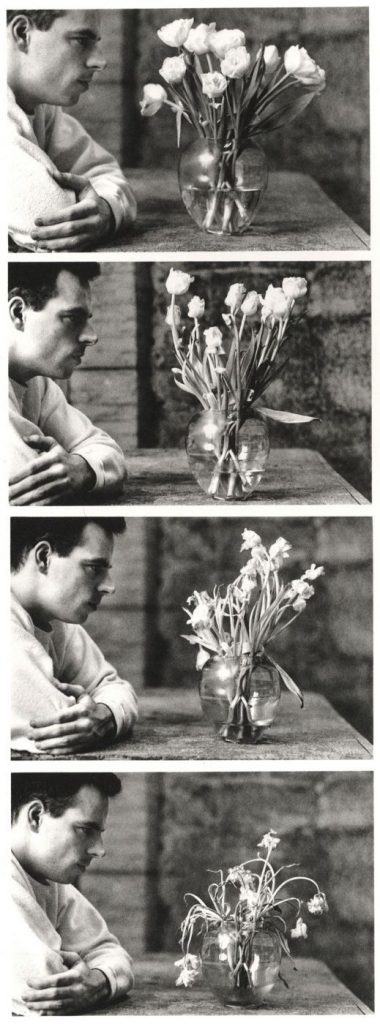
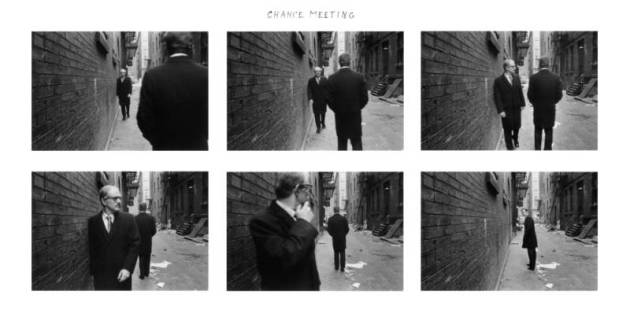 I was also drawn to Michal’s work because of the ways in which he has used reflections. He has explored the idea of mistrusting appearances and the truths that lie beyond the surface. Like mirrors cameras recreate a chosen subject ‘truthfully’ onto a flat surface by redirecting beams of light. Michals has stressed his suspicion of the purely visual to the extent of even abandoning the lens-based image in favour of purely verbal description. He has said ” I am a reflection photographing other reflections within a reflection” which suggests an unease with the process of trying to trap appearances. His work focuses on exploring invisible and internal themes and his use of mirrors could relate to the introspective nature of his work. He also connects his work on this to things such as mythology and literacy such as the example below which references the Greek myth of Narcissus.
I was also drawn to Michal’s work because of the ways in which he has used reflections. He has explored the idea of mistrusting appearances and the truths that lie beyond the surface. Like mirrors cameras recreate a chosen subject ‘truthfully’ onto a flat surface by redirecting beams of light. Michals has stressed his suspicion of the purely visual to the extent of even abandoning the lens-based image in favour of purely verbal description. He has said ” I am a reflection photographing other reflections within a reflection” which suggests an unease with the process of trying to trap appearances. His work focuses on exploring invisible and internal themes and his use of mirrors could relate to the introspective nature of his work. He also connects his work on this to things such as mythology and literacy such as the example below which references the Greek myth of Narcissus.
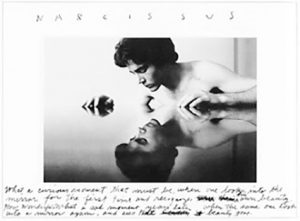
The famous example of his work shown below was created for French Vogue and was intended to illustrate a feature on quantum physics. The series is based on Werner Heisenberg’s uncertainty principle which basically said you can’t predict with certainty the position/velocity of a particle but they instead interact in chaos. Michals has said ” I’ve always been interested in physics and I like trying to photograph things that seem un-photographable – rather than looking at reality, I aim to get deep inside it and explore”. He explains that he bought the convex mirror in an antique shop in Bath and was intrigued by the distortions it created. He used this to illustrate Heisenberg’s principle because it transforms everything in front of it. When the model moves the image changes completely which creates a powerful energy to the series. Displaying them together this way effectively presents this and in the last image, when the model is looking at the camera and her cheek appears in the mirror so that there is no face at all it demonstrates a “blank slate” of pure white energy. Technically the individual photographs are also well captured with what appears to be natural light from the window and the black and white emphasising the contrasts and forms. 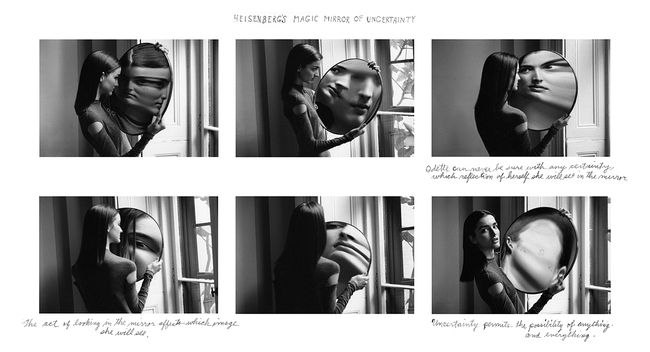
The series below called ‘Alice’s Mirror’ is presumably based on ‘Through the Looking-Glass’, the sequel to Alice in Wonderland. In the novel she considers what the world is like on the other side of a mirror’s reflection and steps through the mirror into another world. I like Michal’s use of miniatures in this series to distort the viewer’s perceptions and create a surreal piece and I would be interested in exploring something similar in my own work. 
